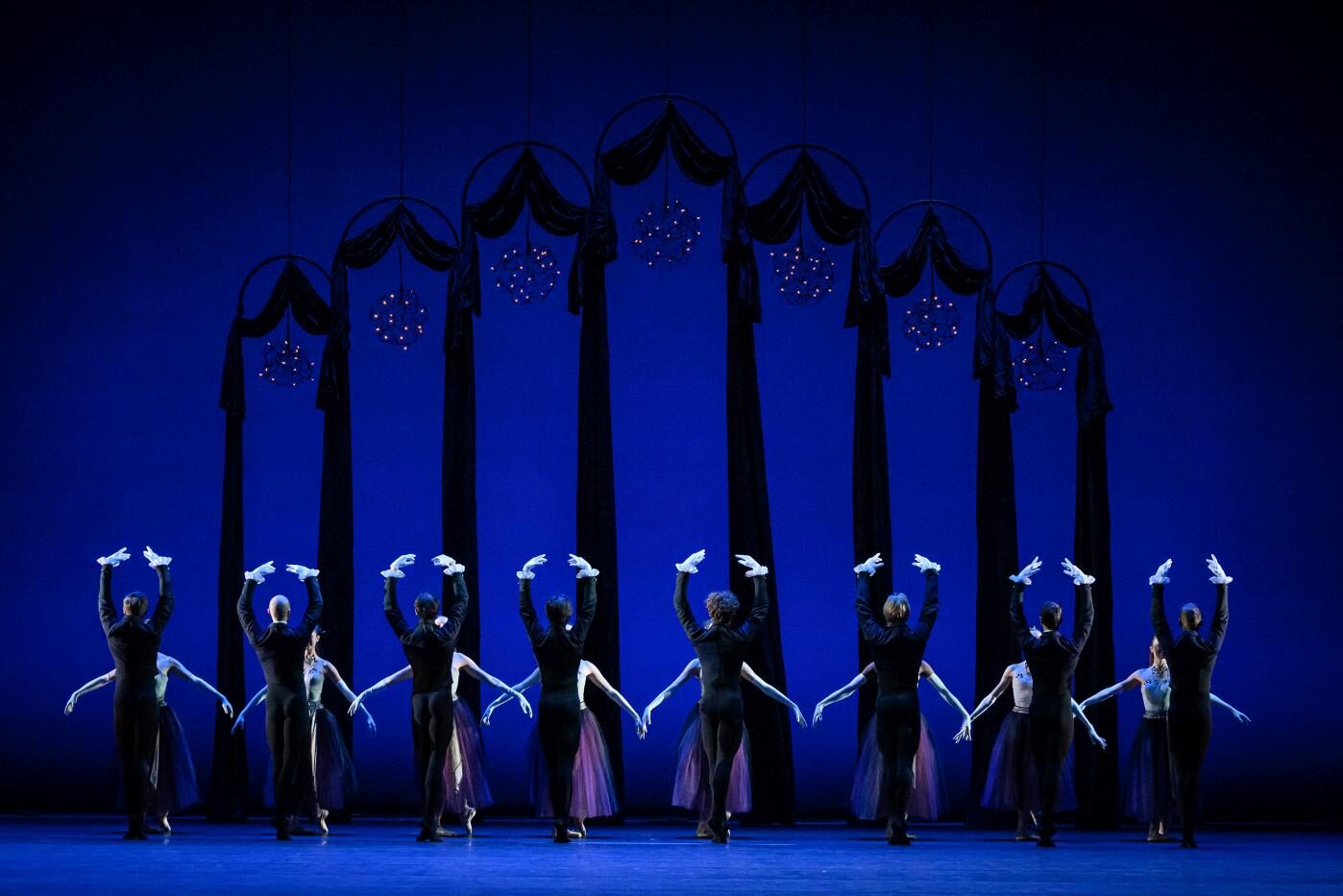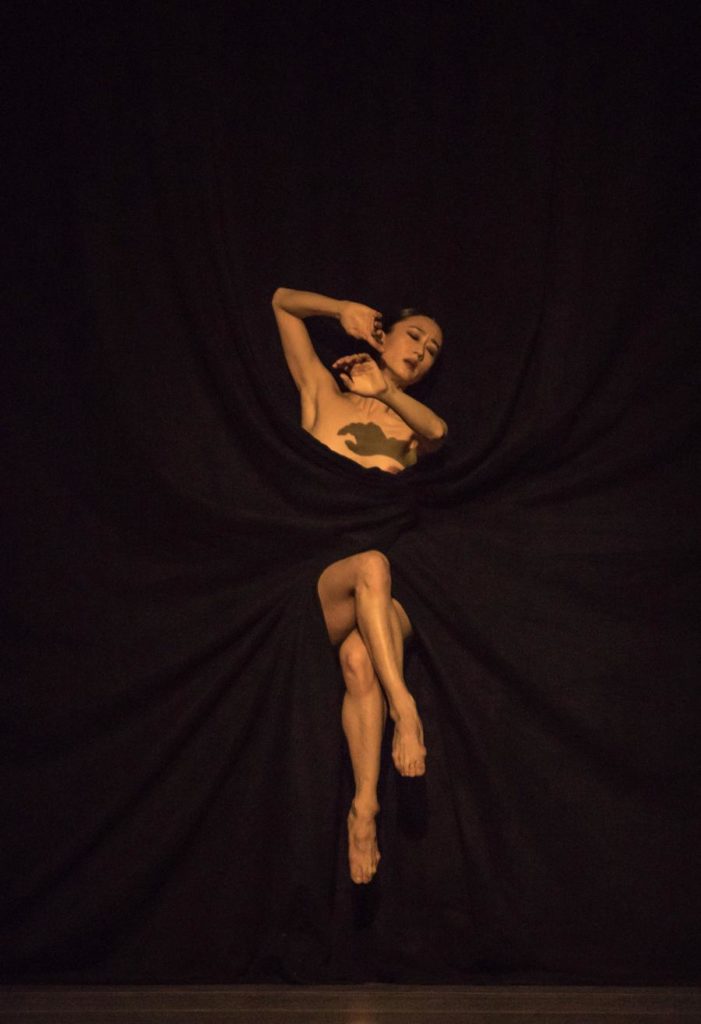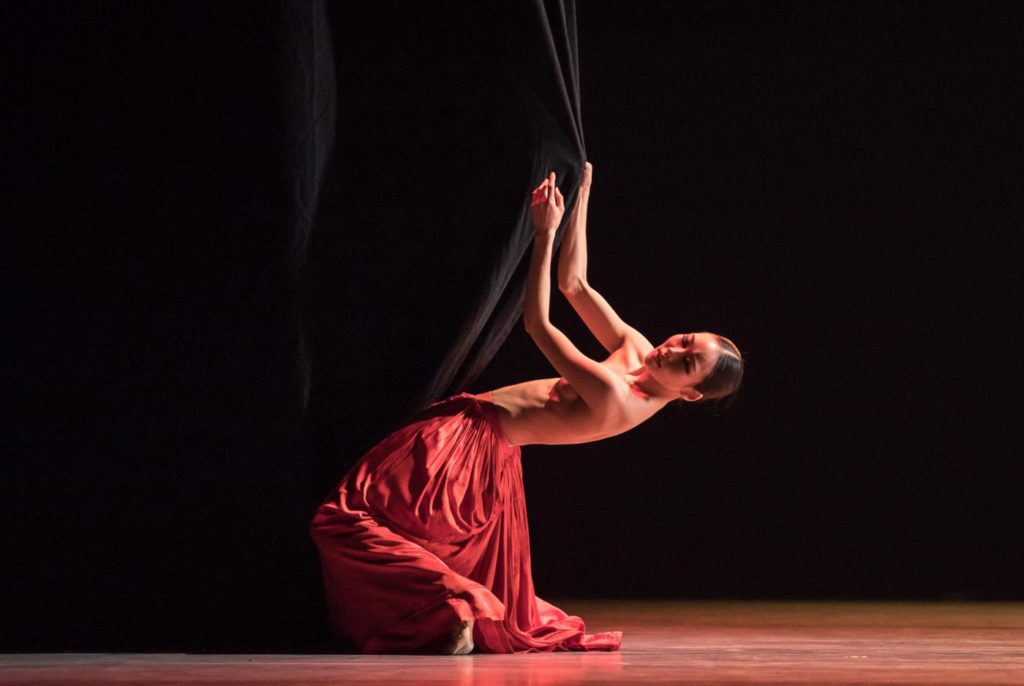“Bella Figura” (“Bella Figura” / “Stepping Stones” / “Sweet Dreams” / “Sechs Tänze”)
Ballet Zurich
Opernhaus Zurich
Zurich, Switzerland
February 02, 2019
by Ilona Landgraf
Copyright © 2019 by Ilona Landgraf
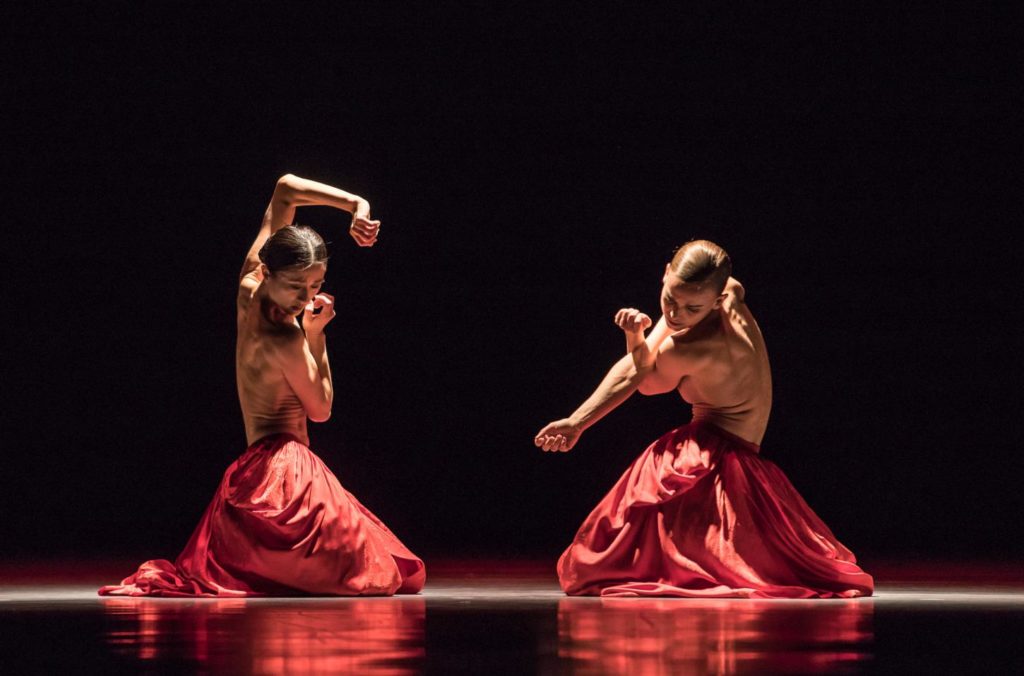 In September 2017, the Czech choreographer Jiří Kylián was awarded the “Positano Premia La Danza Léonide Massine” for life achievement. Last year, The Hague (his chosen home) celebrated his seventieth birthday by bestowing him with honorary citizenship at a festival in his honor. This March, Kylían will become a member of the French Academy of Fine Arts and will preside over the newly established choreography section of the Académie Française.
In September 2017, the Czech choreographer Jiří Kylián was awarded the “Positano Premia La Danza Léonide Massine” for life achievement. Last year, The Hague (his chosen home) celebrated his seventieth birthday by bestowing him with honorary citizenship at a festival in his honor. This March, Kylían will become a member of the French Academy of Fine Arts and will preside over the newly established choreography section of the Académie Française.
In mid-January, a Kylán-homage premiered at Ballet Zurich, created from four pieces that had been developed between 1986-1995. In an interview in the program booklet, Kylían described the pieces as having very different choreographic handwriting and therefore as unrelated.
The first and second pieces – “Bella Figura” (created for NDT I in 1995) and “Stepping Stones” (created for Stuttgart Ballet in 1991) – share the same movement language. We see fluid waves ripple through entire bodies and watch arms wriggle softly. The dancers turn on bent knees, flex their feet, turn in their legs. During several leaps, they shake one leg as if trying to get rid of a cramp. Movements snap open like a flipped switch and shut like a rusty hinge. During lifts, the women hold their legs apart, frozen like beetles. At other moments, they bend their legs as if seated
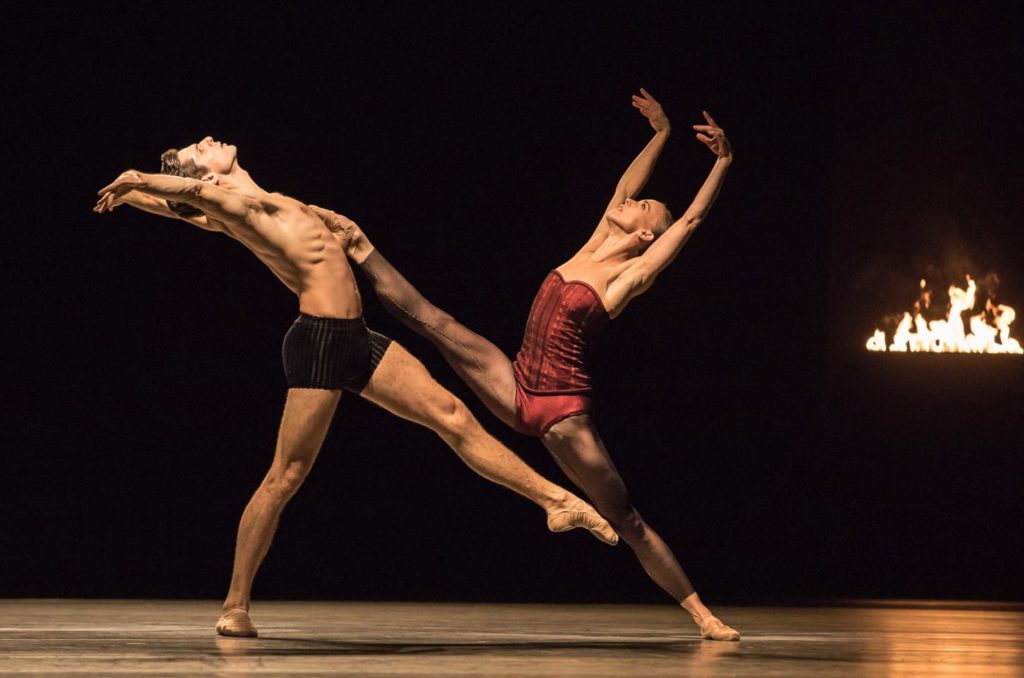
 on an imaginary chair, or cross them chastely. Dancers freeze in ungainly poses: they hunch up their shoulders, shiver, tremor, and slap themselves on the chest and the thighs again and again.
on an imaginary chair, or cross them chastely. Dancers freeze in ungainly poses: they hunch up their shoulders, shiver, tremor, and slap themselves on the chest and the thighs again and again.
Although similar stylistically and movement-wise, the pieces seem distinct by their respective veneer. In “Bella Figura”, for example, the dancers wear bright red panniers that contrast with the all-black backdrop. Naked mannequins in plexiglass cubes hang from the ceiling. Later, the flickering of two open flames positioned on either side of the upstage wall distracts from a collection of insignificant pas de deux. The main feature of “Bella Figura”, however, is its homoerotic touch. The women dance with exposed chests, a fact that causes them to first gesture nervously and later carry 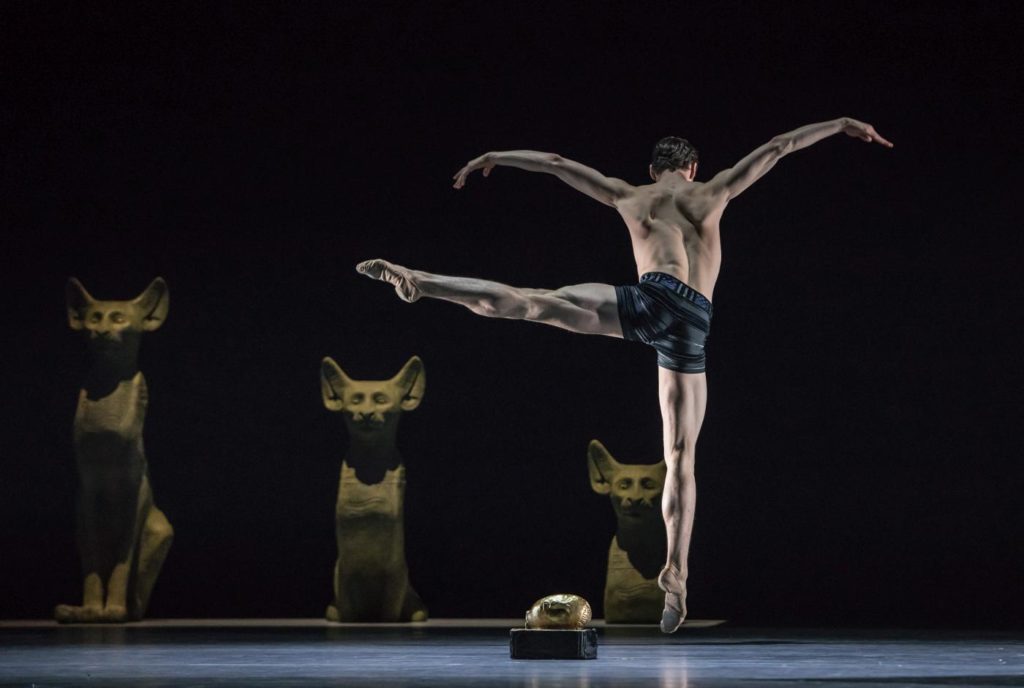 themselves with pride. In the central pas de deux between two women, each pulls one side of the curtain towards herself and presses her pelvis strongly against it as if in the throes of intercourse. In the small, brightly lit frame that is left open, they kneel face to face, trying with a mix of awe and desire to touch one another. They drop their skirts and, standing among the red cloth, continue their attempts. “Stabat mater” by Pergolesi – one part of the compiled music – charges the atmosphere with churchly meaning.
themselves with pride. In the central pas de deux between two women, each pulls one side of the curtain towards herself and presses her pelvis strongly against it as if in the throes of intercourse. In the small, brightly lit frame that is left open, they kneel face to face, trying with a mix of awe and desire to touch one another. They drop their skirts and, standing among the red cloth, continue their attempts. “Stabat mater” by Pergolesi – one part of the compiled music – charges the atmosphere with churchly meaning.
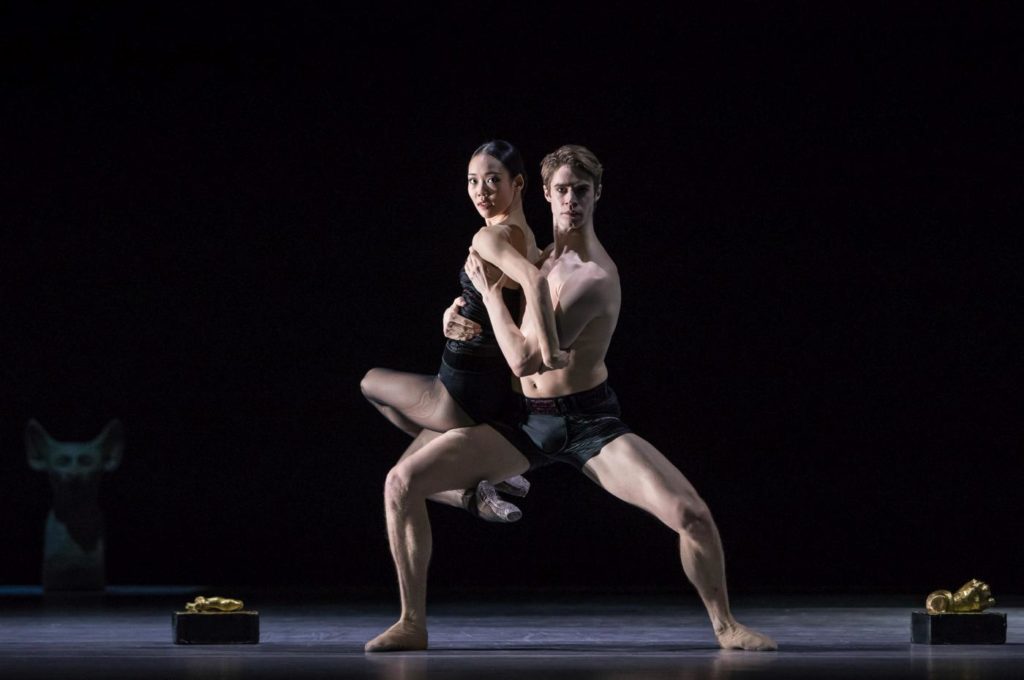 “Stepping Stones” is meant to revere cultural achievements of the past. Watched over by three Egyptian stone cats, the dancers carry golden objects – hands, a head, a small barrel, a female figure – on black blocks that resemble the stepping stones of history. Occasionally, the dancers put them down to the left or right or lay on their backs with the golden objects tucked behind their heads. An enormous triangle pierced through the center turns in slow-motion high above the dancers’ heads. Might it be a highly abstract version of the eye of God?
“Stepping Stones” is meant to revere cultural achievements of the past. Watched over by three Egyptian stone cats, the dancers carry golden objects – hands, a head, a small barrel, a female figure – on black blocks that resemble the stepping stones of history. Occasionally, the dancers put them down to the left or right or lay on their backs with the golden objects tucked behind their heads. An enormous triangle pierced through the center turns in slow-motion high above the dancers’ heads. Might it be a highly abstract version of the eye of God?
In both “Bella Figura” and “Stepping Stones” a dancer periodically stands in the background and observes the others. “Bella 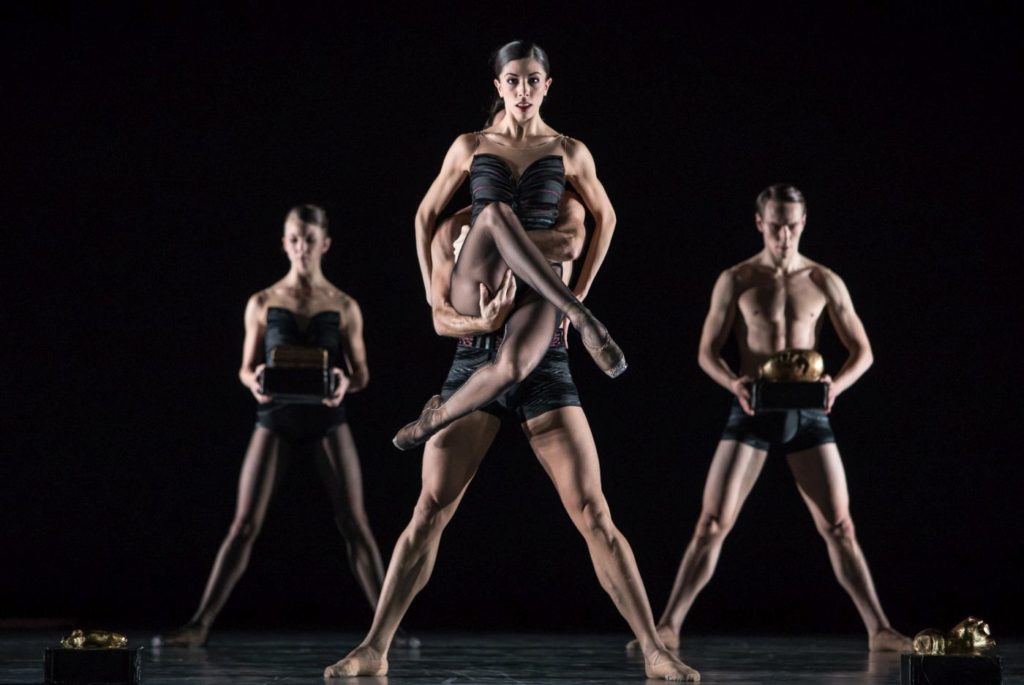
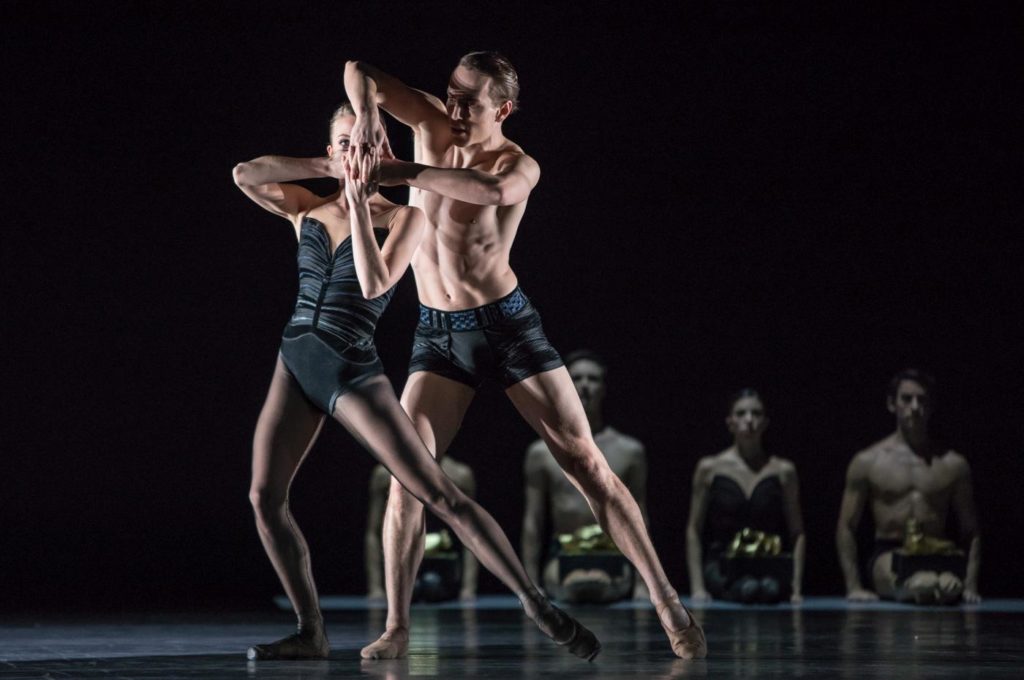 Figura” ends with two dancers walking casually offstage after an unmemorable pas de deux danced in silence. In “Stepping Stones”, the group of dancers performs several pour de bras, then everyone lays down on the back and holds arms and legs up. With the music (sedate compositions by John Cage and Anton Webern) growing slower and slower, the dancers lower their limbs to the ground in synchrony. Again – it’s silent.
Figura” ends with two dancers walking casually offstage after an unmemorable pas de deux danced in silence. In “Stepping Stones”, the group of dancers performs several pour de bras, then everyone lays down on the back and holds arms and legs up. With the music (sedate compositions by John Cage and Anton Webern) growing slower and slower, the dancers lower their limbs to the ground in synchrony. Again – it’s silent.
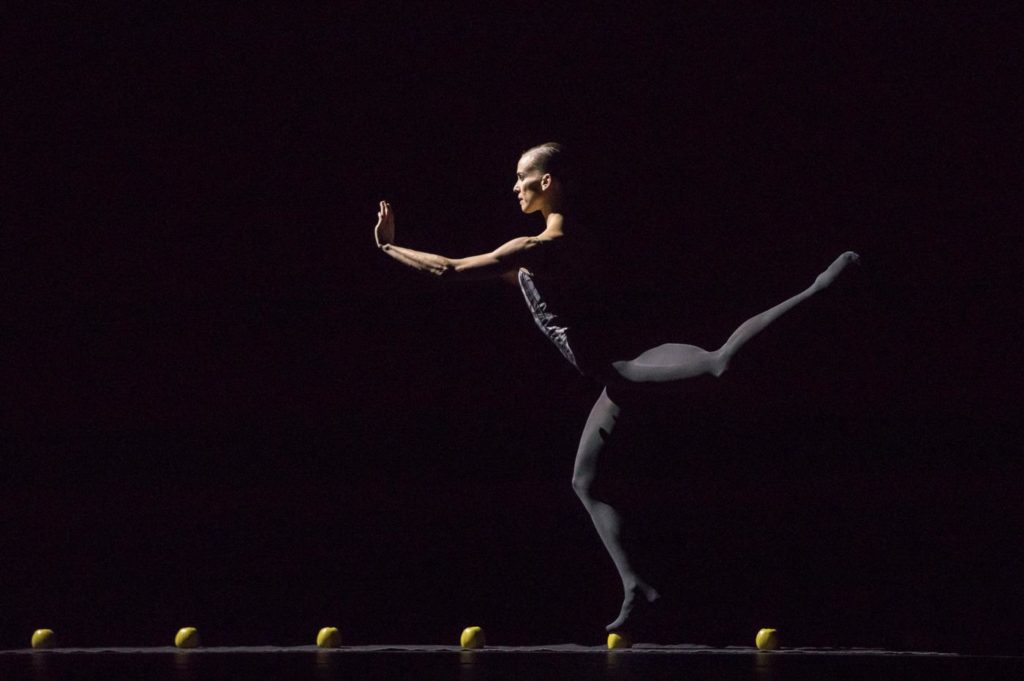 Joke Visser designed the costumes for these first two ballets and also for the third, “Sweet Dreams” (created for NDT I in 1990). Besides the red panniers in “Bella Figura”, he dressed the dancers in shorts that resemble bathing trunks. Only in “Sweet Dreams” did the men wear black pants. Every woman sports a uni-colored corsage and black tights, while the men either wear black tops or go bare-chested.
Joke Visser designed the costumes for these first two ballets and also for the third, “Sweet Dreams” (created for NDT I in 1990). Besides the red panniers in “Bella Figura”, he dressed the dancers in shorts that resemble bathing trunks. Only in “Sweet Dreams” did the men wear black pants. Every woman sports a uni-colored corsage and black tights, while the men either wear black tops or go bare-chested.
Kylían’s “Sweet Dreams”, set to Anton Webern’s “Six Pieces for Orchestra” (1909), aren’t sweet. According to the composer himself, the piece describes episodes connected with his mother’s death. It’s dark, expressive music. The longest movement lasts for four minutes, while the shortest has less than fifty seconds. Kylían’s 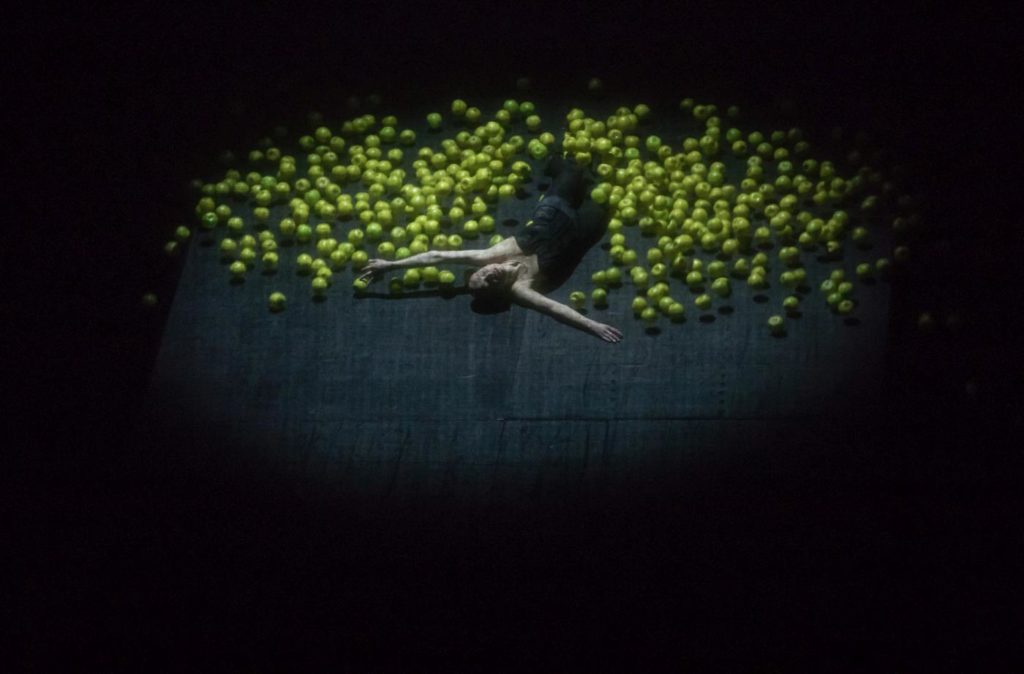
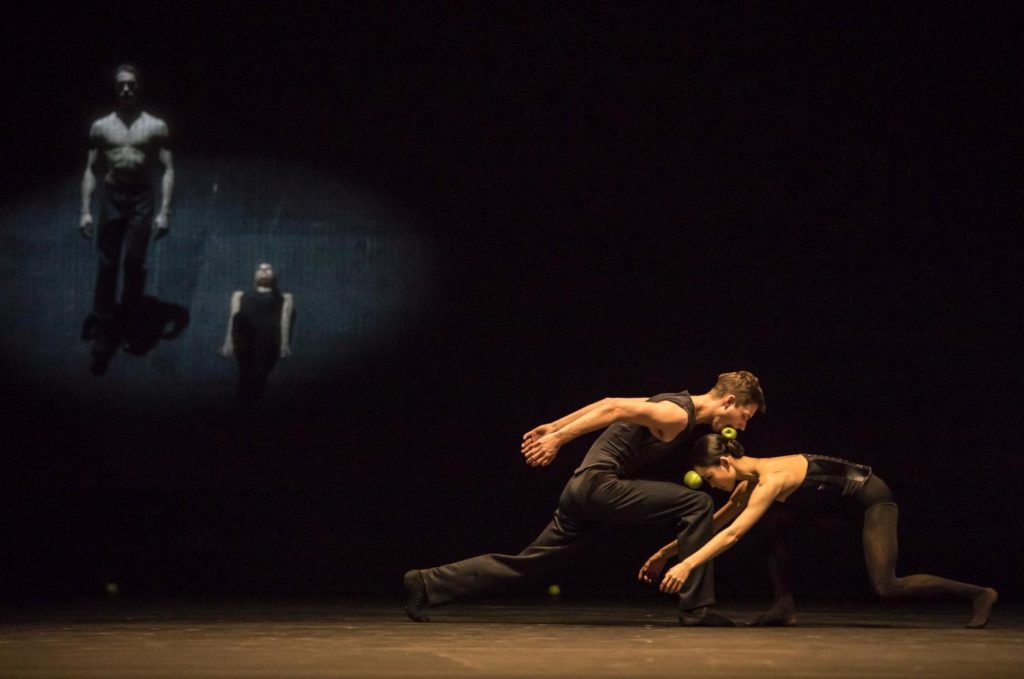 choreography is more aggressive than that of the previous piece: jumps have more force, sometimes the dancers beat each other and strike poses of victory. The women are wedged horizontally between the men’s lower legs or crouch on their necks as if seated on an observation deck. Other times they hang down the men’s backs like potato sacks, or – held up at the belly – hang their limbs
choreography is more aggressive than that of the previous piece: jumps have more force, sometimes the dancers beat each other and strike poses of victory. The women are wedged horizontally between the men’s lower legs or crouch on their necks as if seated on an observation deck. Other times they hang down the men’s backs like potato sacks, or – held up at the belly – hang their limbs 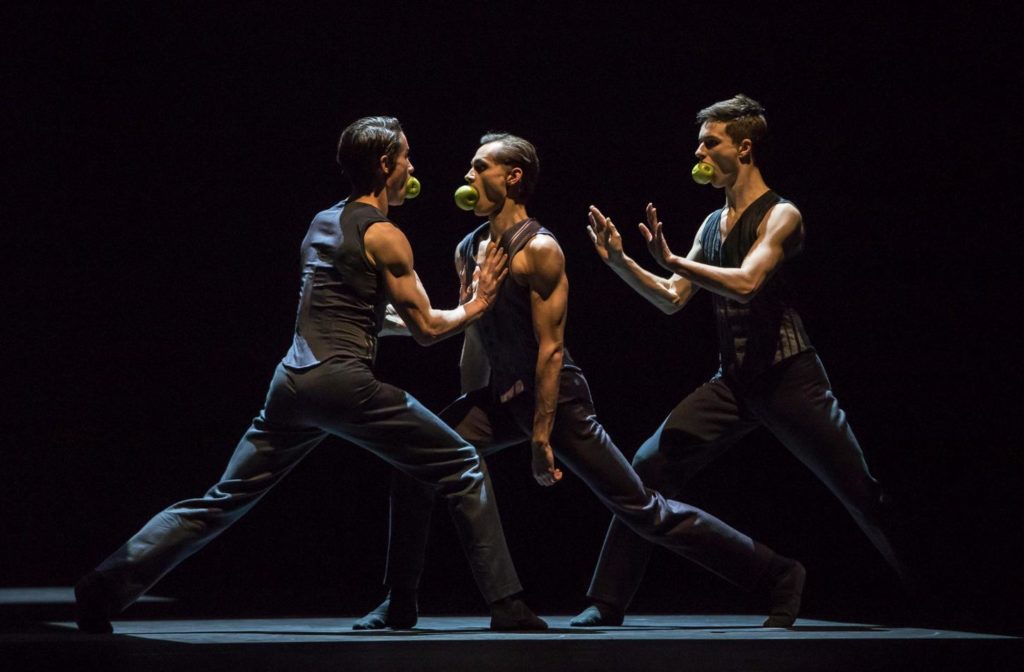 straight down. They look desperate and exhausted.
straight down. They look desperate and exhausted.
In writing about the tragedy underlying the composition in the program book, Kylían also discerns a bizarre humor in the music. This seems to have inspired him to make ample use of an odd prop: apples. Their grass-green clashes with the black of the set. The dancers walk contemplatively, holding apples in their hands as if imitating Hamlet mulling over the skull. One ballerina balances on apples that have been lined up; when hit by a flying apple, she kicks it back. During several sequences the dancers fiercely latch their teeth into the fruits. A torrent of apples rolls across the floor in a video projection. Later, a dancer hovers mid-air at the back of the 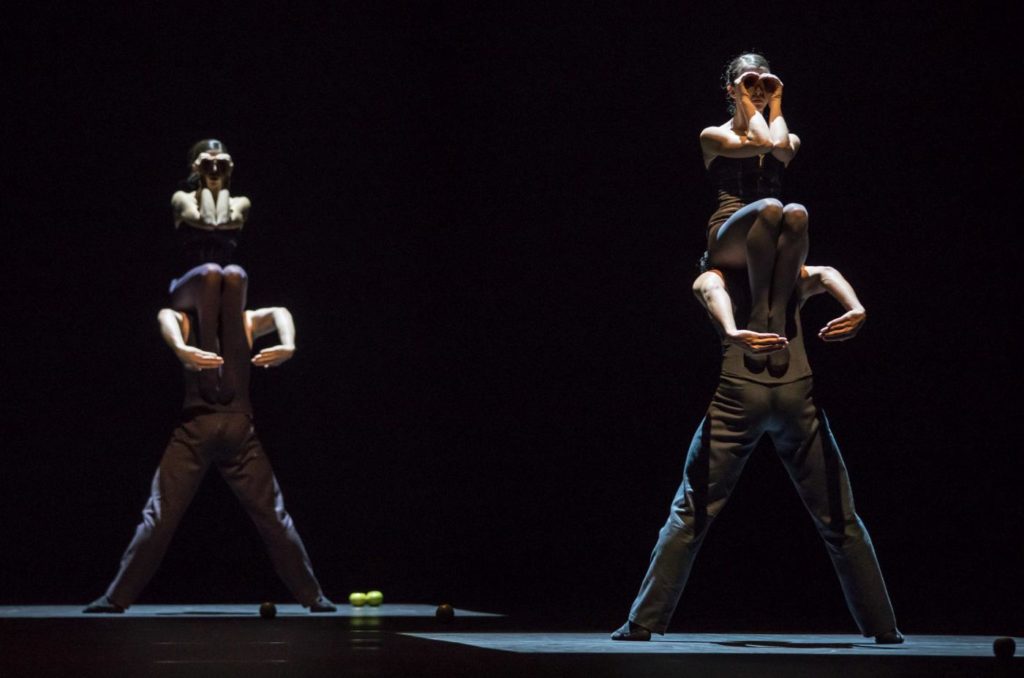 stage, playing with an apple just like a child in a bathtub toys with a rubber duck.
stage, playing with an apple just like a child in a bathtub toys with a rubber duck.
“Sweet Dreams” seamlessly transitions into the last piece, “Sechs Tänze” (created for NDT I in 1986). With Mozart’s happy-go-lucky “Six German Dances”, the atmosphere develops into gimmickry. Dancers in linen underwear alternate with two men in crinolines (which are in fact stiff casings mounted on rollers). Towering wigs poof clouds of white dust with every shake of a head. This (and the piece’s overall style) instantly reminded me of Kylían’s 2001-choreography for “Birth-Day”.
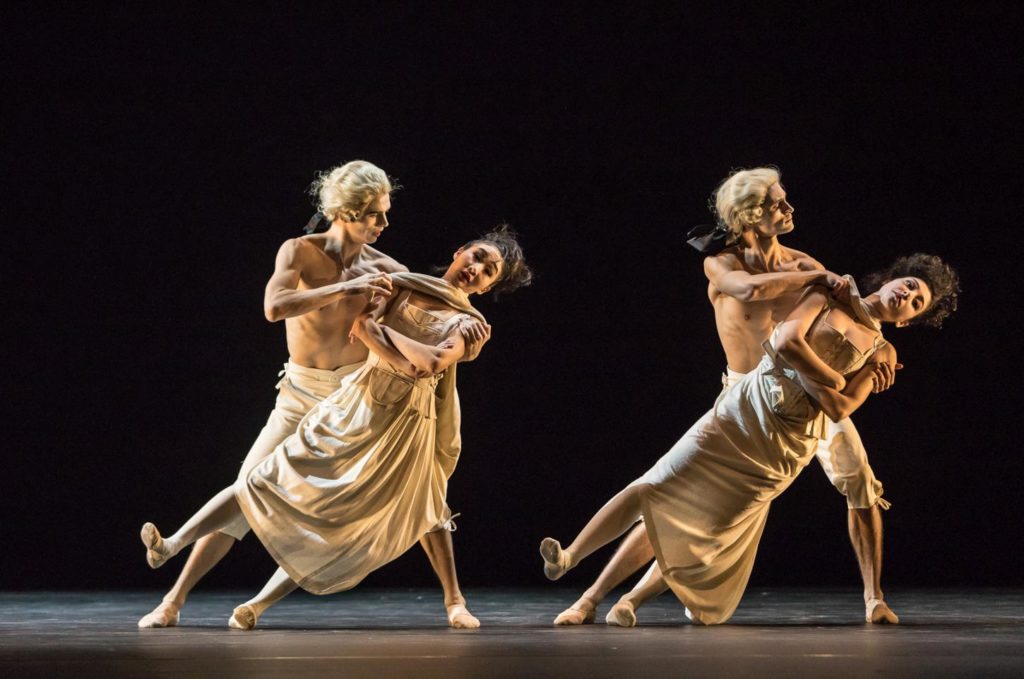 Exaggerated stiltedness and continuous slapstick are the centerpieces of “Sechs Tänze”, but many of the jokes are too forced to be funny. Each time the two men in crinolines appear, they try to outdo their previous gag with one even more absurd. At one point, one of the men suddenly stands at the front stage without a crinoline, hastily covering the fig leaf at his crotch with his wig. Later, two dancers pile up to a hulk in crinoline, who feistily sways a foil. The man in the other crinoline anxiously ducks his head, shrinking to the size of a dwarf. One man heartily bites into a green apple from “Sweet Dreams” that has been skewered on his foil, suggesting a connection between the pieces.
Exaggerated stiltedness and continuous slapstick are the centerpieces of “Sechs Tänze”, but many of the jokes are too forced to be funny. Each time the two men in crinolines appear, they try to outdo their previous gag with one even more absurd. At one point, one of the men suddenly stands at the front stage without a crinoline, hastily covering the fig leaf at his crotch with his wig. Later, two dancers pile up to a hulk in crinoline, who feistily sways a foil. The man in the other crinoline anxiously ducks his head, shrinking to the size of a dwarf. One man heartily bites into a green apple from “Sweet Dreams” that has been skewered on his foil, suggesting a connection between the pieces.
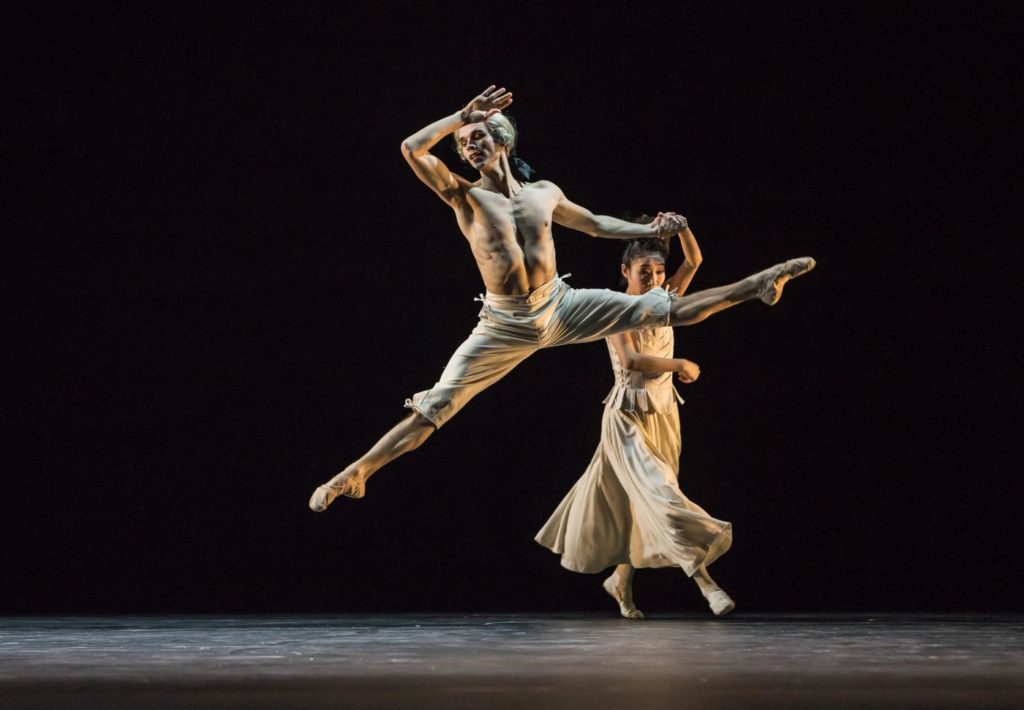
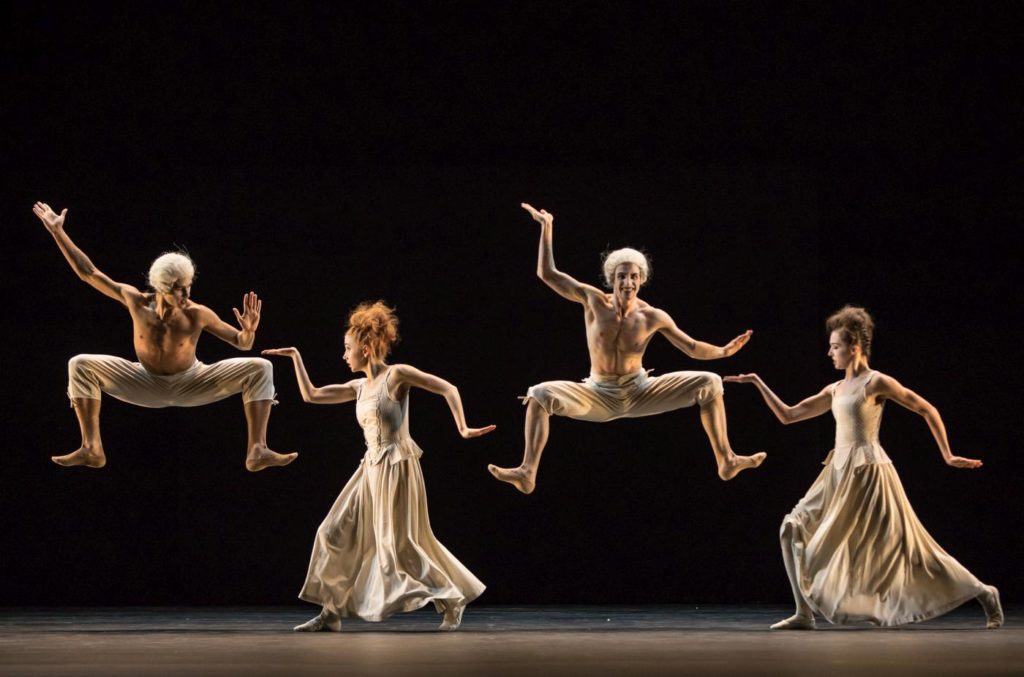 In the final scene, the dancers line up along the front edge of the stage and wave to the audience while a curtain of iridescent soap bubbles rains down in front of them. “Sechs Tänze” is, according to a remark by Kylían himself, “actually complete nonsense”. He’s right. It’s nonsense, and therefore disposable.
In the final scene, the dancers line up along the front edge of the stage and wave to the audience while a curtain of iridescent soap bubbles rains down in front of them. “Sechs Tänze” is, according to a remark by Kylían himself, “actually complete nonsense”. He’s right. It’s nonsense, and therefore disposable.
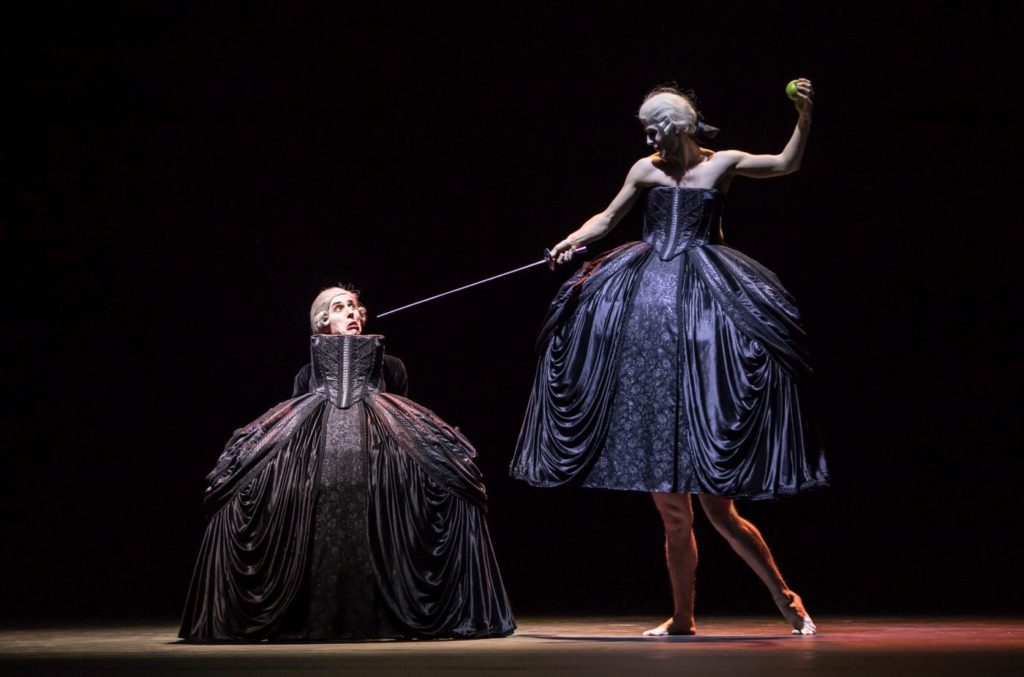 Zurich Ballet’s homage-program failed from two perspectives: it presents neither a stylistically-varied spectrum nor substantial pieces that will stand the test of time. Why, for example, did they fail to consider Kylían’s “Forgotten Land”? Or his “Symphony of Psalms”?
Zurich Ballet’s homage-program failed from two perspectives: it presents neither a stylistically-varied spectrum nor substantial pieces that will stand the test of time. Why, for example, did they fail to consider Kylían’s “Forgotten Land”? Or his “Symphony of Psalms”?
To make matters worse, the Zurich Ballet posted four dancers’ opinions on Kylían’s work in the program section of their German website for “Bella Figura”. They gush about the mystery of Kylían’s choreography and about how dancing his pieces feels like receiving a gift. It’s hard to believe that these remarks are born of the dancers’ own volition. Rather, they smell of: “He who pays the piper calls the tune.” Poor Zurich Opera House if it is in need of such objectionable marketing.
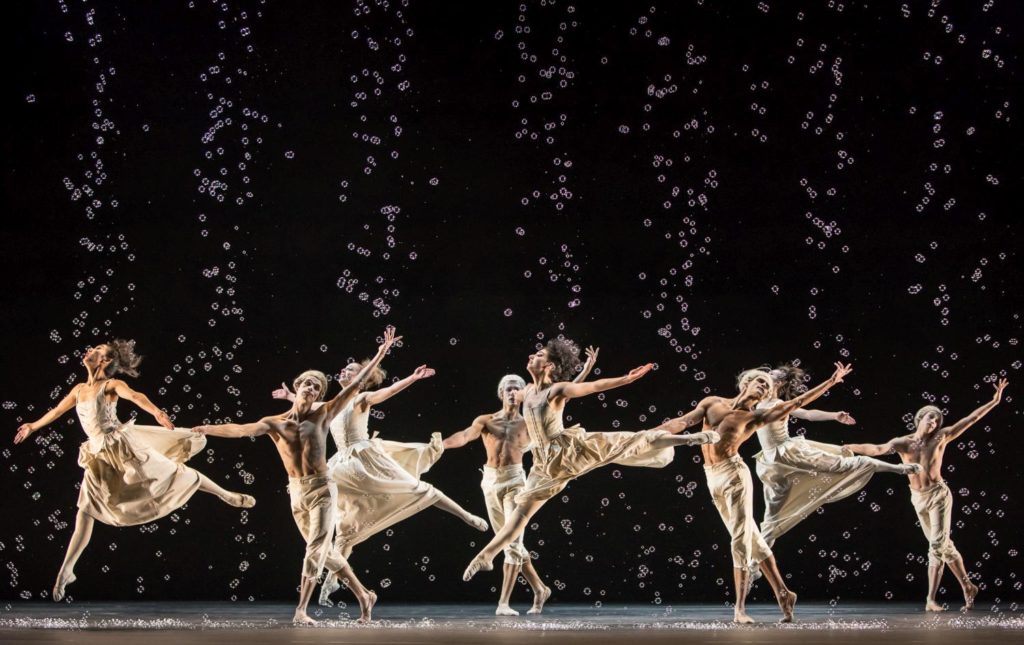
| Links: | Website of Ballet Zurich | |
| Trailer “Bella Figura” | ||
| Photos: | (The photos show a partially different cast from an earlier performance.) | |
| “Bella Figura” | ||
| 1. | Yen Han and Katja Wünsche, “Bella Figura” by Jiří Kylián, Ballet Zurich 2019 | |
| 2. | Sujung Lim, “Bella Figura” by Jiří Kylián, Ballet Zurich 2019 | |
| 3. | Yen Han, “Bella Figura” by Jiří Kylián, Ballet Zurich 2019 | |
| 4. | Yannick Bittencourt and Katja Wünsche, “Bella Figura” by Jiří Kylián, Ballet Zurich 2019 | |
| 5. | Sujung Lim, Tigran Mkrtchyan and Wei Chen, “Bella Figura” by Jiří Kylián, Ballet Zurich 2019 | |
| “Stepping Stones” | ||
| 6. | Cohen Aitchison-Dugas, “Stepping Stones” by Jiří Kylián, Ballet Zurich 2019 | |
| 7. | Sujung Lim and Jesse Fraser, “Stepping Stones” by Jiří Kylián, Ballet Zurich 2019 | |
| 8. | Michelle Willems, Daniel Mulligan, Aurore Lissitzky, Jan Casier, Constanze Perotta Altube and Esteban Berlanga, “Stepping Stones” by Jiří Kylián, Ballet Zurich 2019 | |
| 9. | Michelle Willems, Constanze Perotta Altube, Esteban Berlanga and Daniel Mulligan, “Stepping Stones” by Jiří Kylián, Ballet Zurich 2019 | |
| “Sweet Dreams” | ||
| 10. | Katja Wünsche, “Sweet Dreams” by Jiří Kylián, Ballet Zurich 2019 | |
| 11. | Cohen Aitchison-Dugas, Aurore Lissitzky, Jan Casier and Sujung Lim, “Sweet Dreams” by Jiří Kylián, Ballet Zurich 2019 | |
| 12. | Irmina Kopaczynska, “Sweet Dreams” by Jiří Kylián, Ballet Zurich 2019 | |
| 13. | Alexander Jones, Dominik Slavkovský and Jan Casier, “Sweet Dreams” by Jiří Kylián, Ballet Zurich 2019 | |
| 14. | Constanze Perotta Altube, Matthew Knight, Michelle Willems and Kevin Pouzou, “Sweet Dreams” by Jiří Kylián, Ballet Zurich 2019 | |
| “Sechs Tänze” | ||
| 15. | Mark Geilings, Meiri Maeda, Dominik Slavkovský and Arianna Soleti, “Sechs Tänze” by Jiří Kylián, Ballet Zurich 2019 | |
| 16. | Gustavo Chalub, Natatia Warzabluk, Gary Solan and Chandler Hammond, “Sechs Tänze” by Jiří Kylián, Ballet Zurich 2019 | |
| 17. | Mark Geilings and Meiri Maeda, “Sechs Tänze” by Jiří Kylián, Ballet Zurich 2019 | |
| 18. | Daniel Mulligan, Gary Solan and Matthew Knight, “Sechs Tänze” by Jiří Kylián, Ballet Zurich 2019 | |
| 19. | Meiri Maeda, Mark Geilings, Mélanie Borel, Lucas Valente, Arianna Soleti, Dominik Slavkovský, Chandler Hammond and Christopher Parker, “Sechs Tänze” by Jiří Kylián, Ballet Zurich 2019 | |
| all photos © Gregory Bartadon | ||
| Editing: | Jake Stepansky |
